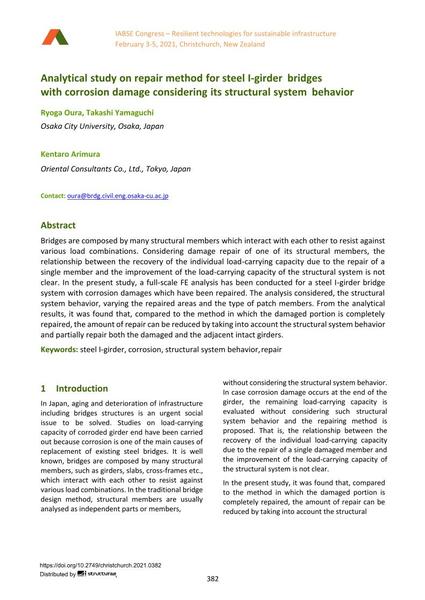Analytical study on repair method for steel I-girder bridges with corrosion damage considering its structural system behavior

|
|
|||||||||||
Détails bibliographiques
| Auteur(s): |
Ryoga Oura
(Osaka City University, Osaka, Japan)
Takashi Yamaguchi (Osaka City University, Osaka, Japan) Kentaro Arimura (Oriental Consultants Co., Ltd., Tokyo, Japan) |
||||
|---|---|---|---|---|---|
| Médium: | papier de conférence | ||||
| Langue(s): | anglais | ||||
| Conférence: | IABSE Congress: Resilient technologies for sustainable infrastructure, Christchurch, New Zealand, 3-5 February 2021 | ||||
| Publié dans: | IABSE Congress Christchurch 2020 | ||||
|
|||||
| Page(s): | 382-389 | ||||
| Nombre total de pages (du PDF): | 8 | ||||
| DOI: | 10.2749/christchurch.2021.0382 | ||||
| Abstrait: |
Bridges are composed by many structural members which interact with each other to resist against various load combinations. Considering damage repair of one of its structural members, the relationship between the recovery of the individual load-carrying capacity due to the repair of a single member and the improvement of the load-carrying capacity of the structural system is not clear. In the present study, a full-scale FE analysis has been conducted for a steel I-girder bridge system with corrosion damages which have been repaired. The analysis considered, the structural system behavior, varying the repaired areas and the type of patch members. From the analytical results, it was found that, compared to the method in which the damaged portion is completely repaired, the amount of repair can be reduced by taking into account the structural system behavior and partially repair both the damaged and the adjacent intact girders. |
||||
